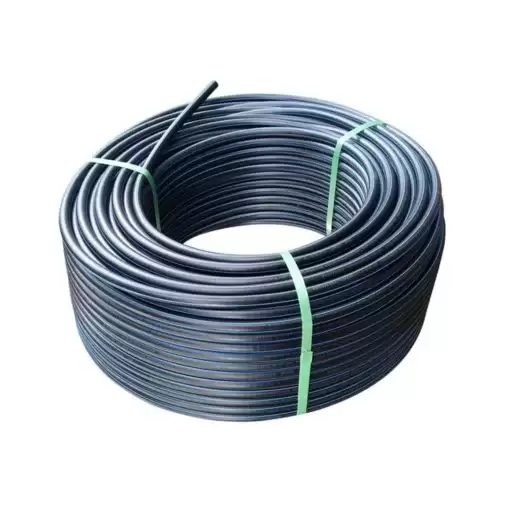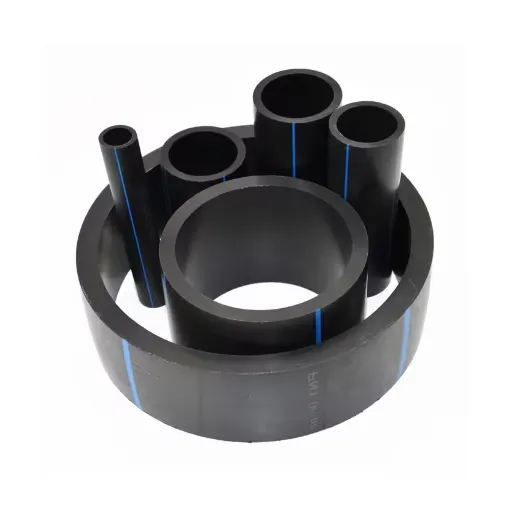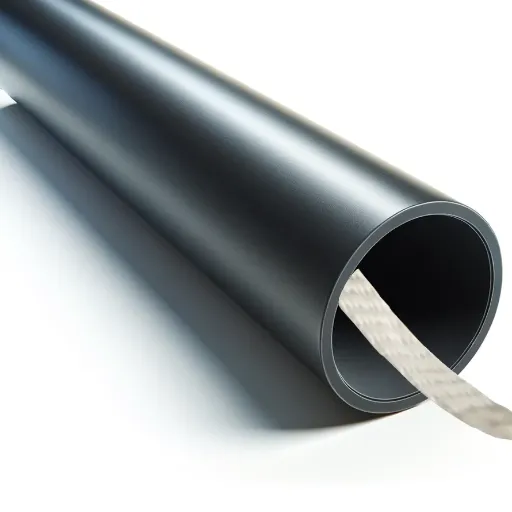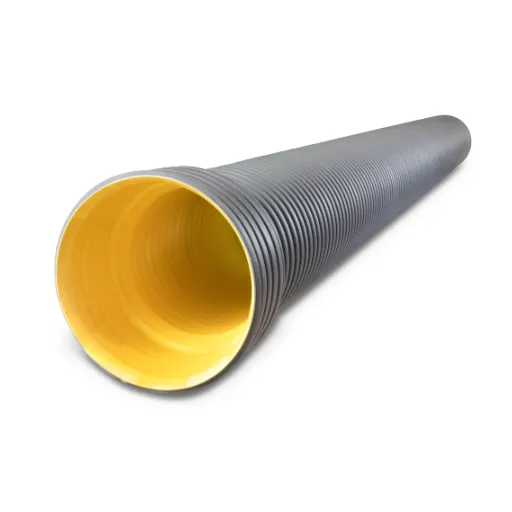High-Density Polyethylene (HDPE) flexible pipes have emerged as one of the most reliable and adaptable solutions in modern infrastructure, offering unmatched performance across a wide range of industries. Known for their durability, flexibility, and resistance to corrosion, HDPE pipes serve as a critical component in everything from water and gas distribution to industrial and agricultural applications. This article will explore the various attributes that make HDPE flexible pipe a preferred choice for engineers and project planners, highlighting its key advantages, practical uses, and the technology behind its innovation. Whether you’re seeking insights into advanced piping solutions or simply looking to better understand how HDPE pipes contribute to efficiency and sustainability, this guide will provide a comprehensive overview to suit your needs.
What is HDPE Pipe and How Does it Work?
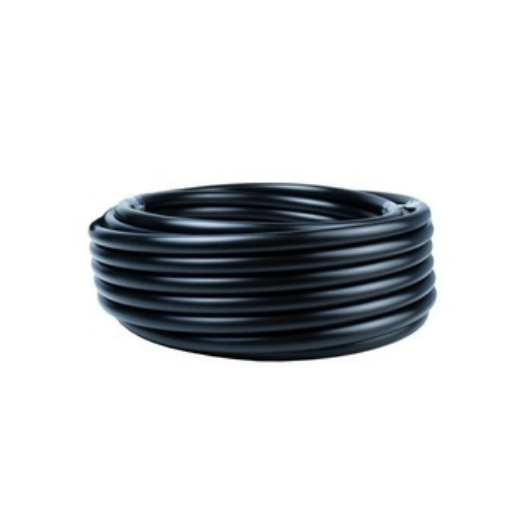
Definition and Properties of HDPE
High-Density Polyethylene (HDPE) is an example of a thermoplastic polymer that has its source in petroleum. Its attributes of high strength-to-density ratio, alongside extreme endurance, set it apart from its peers in the industry. Its production comes up via polymerization of ethylene monomers under certain temperatures and pressure boundaries, leading to a material which possesses tremendous endurance to chemicals, impact, and stress from the environment. HDPE has a peculiar branched structure at the molecular level, which allows molecules to achieve desirable characteristics such as the ability to stretch and bend alongside tensile strength.
HDPE possesses many distinguishing features, among them ability to withstand immense corrosion, as well as various chemicals make HDPE able to thrive in harsh environments. Besides that, HDPE can also sustain extreme weather with working capabilities ranging from 140°F to -40°F, meaning it can function in extremely cold or hot environments.
The material’s low friction coefficient improves flow efficiency in piping systems, while its non-toxicity and inert characteristics guarantee compliance with rigid safety and environmental regulations. In addition, HDPE is light while strong, which aids in the ease of transportation and installation, as well as the costs associated with it. Sophisticated machining technologies have enhanced the material’s resistance to UV radiation and abrasion, which cements its standing as the leading choice for water conveyance, gas distribution, and industrial processing.
Advantages of Using Flexible Pipe
Flexible pipes advantageously enhance industrial and infrastructural frameworks owing to their versatility, strength, and economy. One of the highlighted benefits is their capacity to retain structural integrity over long periods while enduring high-pressure systems, making them suitable for oil and gas as well as water management. Their flexibility eases installation atop a rough surface, reducing groundwork and shortening project deadlines.
Unlike tradotional metallic piping systems, flexible pipes are superior in enduring corrosion and chemicals, making them ideal in harsh operational environments. They also withstand extreme temperature fluctuation, which is critical in places with diverse climatic conditions. Advancements in material science increase mechanical, fatigue, and corrosion resistance of flexible pipes ensuring prolonged service life while reducing maintenance needs.
The transportation expenses are lowered by the light weight of flexible pipes, while quick assembly and disassembly are made easy by its modular design. These features, together with environmental resiliency, have made flexible pipes increasingly preferred in industries seeking greener infrastructure solutions.
Applications of HDPE Pipes in Various Industries
High-density polyethylene (HDPE) pipes are some of the most adaptable pipes on the market, meaning they are used in a variety of sectors. They are preferred in the water supply sector because their corrosion resistance, flexibility, and high strength-to-density ratio enable them to transport potable water efficiently, and HDPE pipes are used extensively for the transport of potable water. Their leak-proof joints and resistance to chemical degradation ensure compliance with stringent health standards while minimizing water loss due to leakage.
The agricultural sector relies on HDPE pipes for both drip and sprinkler irrigation systems. These pipes can withstand high-pressure flows and resist external impacts, which proves their reliability for a variety of field conditions. Furthermore, their strengthenhanced durability against UV rays protects them when exposed to prolonged sunlight.
In the oil and gas sector, fluids, gases, and even slurries can be transported through HDPE pipes. They withstand harsh chemicals while maintaining safe operational pressures, guaranteeing both safety and operational efficiency. Consequently, mining operations utilize HDPE pipes for the transport of abrasive materials due to their smooth internal surfaces, which minimize friction and wear.
Sewage and industrial effluents are safely transported through HDPE pipes due to their chemical resistance, and their flexible design accommodates ground movement which reduces system failures, allowing HDPE pipes to excel in wastewater management.
Lastly, HDPE pipes aid the telecommunications and power industries by functioning as channels for cables. Their protective jackets safeguard cables from physical harm and exposure to weather conditions, increasing the dependability of the communications and power networks. These broad applications highlight the importance of HDPE pipes in different industries.
How to Install HDPE Flexible Pipe?
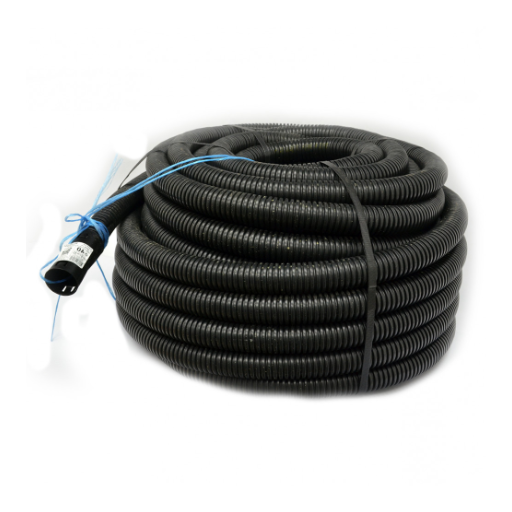
Preparation Steps for Pipe Installation
Adhering to the necessary measures will guarantee the successful execution of the installation of HDPE flexible pipes. Below are the steps following a uniform method:
- Assessment of the Site and Planning: Ensure a comprehensive evaluation of the installation’s location. This includes surveying the soil, examining potential hindrances such as utilities, and confirming that the trench design is by project requirements. Meticulous planning helps mitigate complications associated with installation.
- Inspection and Handling of the Pipe: Check all HDPE pipes for any deformities thoroughly. In case of cracks, dents, or any other form of damage, the pipe needs to be dropped. Take only those pipes which meet set standards for quality installation. Make use of slings or pipe hooks to lift the pipes for appropriate handling without causing strain or damage.
- Preparation of the Trench: The trench should be excavated to the appropriate width and depth while ensuring compliance with design specifications. It is of utmost importance that the trench bottom is stable and even, devoid of any loose debris that provides solid foundational support. Load-distributing material like sand or fine gravel should also be placed at the trench base, which aids in creating uniformity.
- Alignment and Stringingl: In order to ease installation, the pipes should be positioned parallel to the trench. Ensuring that the pipes are clean and devoid of any contaminants is crucial. For every pipeline, marking the alignment points serves to minimize mistakes made during joining.
- Preparing for Joining and Fusion: Remove any oil, dust, or moisture from the surfaces of the pipe ends before fusion welding. All specific jointing methods like butt fusion or electrofusion must follow the directions about temperature, pressure, and alignment as set forth by the equipment manufacturer.
With detailed attention to these steps, the work regarding installations can be done accurately and, at the same time, meet industry standards and project goals.
Common Challenges in HDPE Pipe Installation
HDPE pipes possess a certain flexibility and strength, which is advantageous, but the installation process comes with obstacles as well. One of the main challenges is the joint integrity. Weaker joints resulting from improper fusion through butt fusion or electrofusion, could fail under sustained pressure or use. This could happen due to poor surface treatment, misalignment, incorrect temperatures, or pressure levels during the installation process.
Fusion issues aren’t the only ones, there are also trench preparation and bedding. The high flexibility of HDPE pipes combined with the reliance on external soil support under load means the structural integrity is at risk, especially when poorly compacted bedding, inadequate prep trench depth, which leads to deformation or sagging over time, are factored in. Extreme environmental temperatures can further impact pipe behavior, potentially leading to expansion, contraction, or stress cracks.
Installation in waterlogged areas adds yet another challenge, as these include installation in densely saturated water during the assembly. Without proper anchorage, pipes can misalign and increased complexity during installation. The lightweight properties of HDPE mean the pipes could float. Specialized anchorage or ballast methods need to be employed.
Lastly, like other types of pipes, HDPE pipes require accurate handling and transportation to avoid surface damage. Any form of surface flaws such as scratches or gouges will limit the functionality of the pipe, especially when it is under pressure.Meeting these challenges requires adhering to particular industry standards and effective planning, coupled with the use of modern tools and methods for dependable and efficient installations.
Best Practices for Durable Installations
A combination of proper design, appropriate material handling, and advanced HDPE pipe installation techniques all contribute to durable installations of HDPE pipes. Some of the best practices include:
- Correct Storage: HDPE pipes should be stored on flat surfaces that are free of debris or grade for potential deformity and damage. Further, pipes should only be handled with non-abrasive or padded gear, as scratches and gouges will weaken the pipe over time. While portable, pipes should be placed in puncture-proof containers to maintain structural integrity.
- High-Quality Jointing Fusion Techniques: Use of proven fusion techniques needs to be applied like butt fusion and electro driven serging whereby clean and properly aligned surfaces are fused to joint. These techniques will minimize the chances of joint tears under mechanical stress or variation on temperature.
- Trenching and Backfilling: The trench needs to be excavated to ideal depth and with no variation to the shape of the bottom. The shape of the bottom is of utmost importance as it determines the stability support. As for the backfill, it must be free of blunt objects and expertly compacted in a uniform manner to prevent shaping pressures around the pipe.
- Check Environmental Factors: Evaluate the specific environment of the installation site as regards: range of temperatures, soil type, and water table depth. Addressing these factors minimizes the chances of deformation, buckling, or material damage over time.
- Frequent Testing and Monitoring: Inline inspections and hydrostatic pressure tests should be done before and after installation to check for leaks and contour changes in the pipe and joints. With these checks, it is easy to find possible problems before the pipe starts working.
Adopting these practices during the installation of HDPE pipes will greatly improve system reliability, decrease maintenance expenditure, and prolong operational life.
Understanding the Technical Specifications of HDPE Pipes
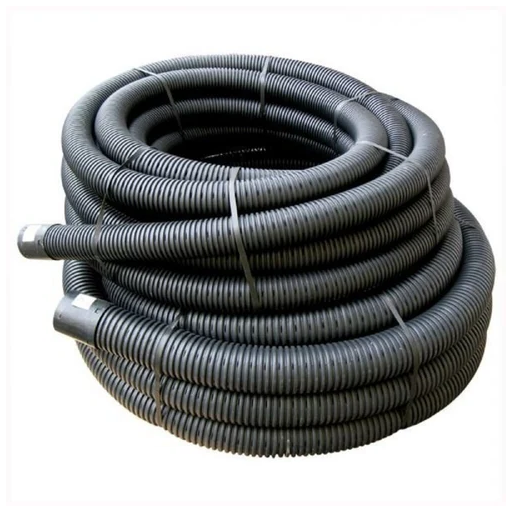
Key Technical Features of Polyethylene Pipe
The design of the pipes made from High Density Polyethylene (HDPE) is intended to allow versatility as a result of its unique material properties. One distinguishing characteristic of HDPE is that its pipes possess a relatively high strength-to-density ratio, which enables them to support immense internal pressure and remain light. The material is also very flexible, which means that the pipe can move with the ground without cracking or breaking.
HDPE pipes can carry a wide variety of fluids, destructive chemicals, with no adverse effects due to their excellent chemical resistance. Also, the materials being transported will not be contaminated due to the non-reactivity of the pipes. In addition to this, the smooth inner surface of HDPE pipes minimizes friction loss during fluid conduction, which leads to an increase in energy efficiency in the system.
In addition to this, these pipes are known for their exceptional durability and longevity, with a service life often exceeding 50 years under standard operating conditions. Sunlight damage will be mitigated due to UV stabilization integrated within the HDPE material, which improves outdoor performance. These pipes also possess resistance to abrasion and impact, allowing for wider utilization for demanding surroundings like mines and heavy industrial regions, which require harsher standards.
With new developments in jointing technology such as thermal butt fusion and electrofusion, joints can now be made to be both seamless and leak proof. This reduces the chances of leaks occurring, which could be harmful to the environment. These innovations, along with HDPE’s ability to be recycled, make it an eco-friendly and sustainable option for pipelines. Taking advantage of these features, HDPE pipes are increasingly becoming a reliable and economic choice in various sectors such as water supply, gas distribution, and wastewater management.
Choosing the Right Pipe Diameter and Length
Choosing the correct pipeline diameter and length is key to achieving maximum pipeline performance and efficiency, which is the goal of every pipeline. A certain diameter would be chosen to achieve a specific flow rate and pressure. For example, larger diameters decrease frictional losses and increase flow, but at the same time may increase material costs and installation challenges. On the contrary, smaller diameters may seem cost-effective at first; however, because they make it more difficult to maintain desired flow rates, more energy will be required to make the pumps work.
When determining pipe length, precise calculations must take into account the distance to be covered, any elevation changes, and future extensions or modifications. Ensuring accurate measurements minimizes overall waste and optimizes material usage. In continuous systems like gas or water supply systems, it is also critical to account for temperature variation due to it impacting both the diameter and length, as well as expansion and contraction.
Pairing these factors alongside data analyses like flow simulation software or various hydraulic modeling tools helps engineers make rational decisions in expectation of simulation outcomes. Following industry norms as well as local codes guarantee compliance with legal requirements and allows the pipeline system to remain functional for an extended period of time.
Why Choose HDPE Pipe Over Traditional Piping Systems?
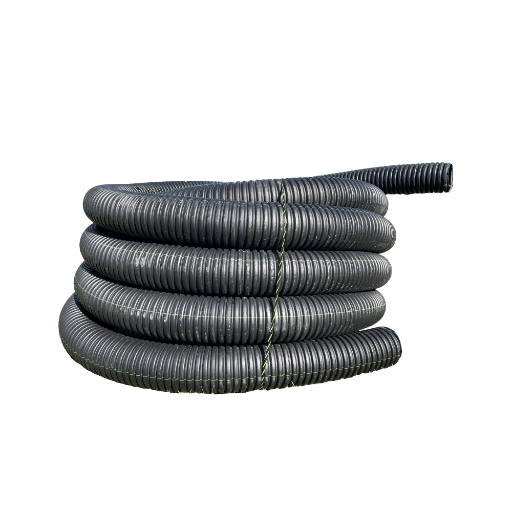
Comparing HDPE and Steel Pipes
Material characteristics, construction practices, durability, maintenance, and other factors are evaluated whenever considering HDPE (High-Density Polyethylene) pipes in comparison to steel piping systems. HDPE pipes possess remarkable flexibility and virtually zero corrosion in comparison to other types of pipes, as opposed to steel, which tends to rust and undergo chemical reactions that weaken its framework with time. HDPE is highly resistant to deterioration from the environment as well as chemicals, making it suitable for applications where soil conditions are hostile or soil is moist or contains high amounts of chemicals.
Moreover, HDPE pipes are easier to transport, install and much lighter than steel. Heat fusion methods of jointing HDPE systems enables a leak-proof and seam-free joint that adds durability and decreases maintenance work. Steel pipes, in contrast, trap depend on mechanical joints or welding that requires significant amounts of labor coupled with frequent examining due to possible joint failures from steeled pillars much more than they’d like.
Economically speaking, HDPE offers a lower total cost of ownership throughout the life of the pipeline compared to other materials. Steel may have a greater tensile strength, but HDPE high impact resistance and ability to withstand ground movement like seismic activity or heavy loads more than compensates. Even though durable steel pipes are, they are more prone to damage from environmental stress.
In the case of smooth internal surfaces, friction losses are lower, which improves hydraulic efficiency. This also allows HDPE pipes to outperform steel pipes, which usually scale or deposit over time, in value as they are far less prone to inefficient flow hindrance. These benefits make HDPE pipes increasingly valuable for cost-efficient modern piping systems used in various industries and municipalities.
Environmental Benefits of High-Density Polyethylene
High-Density Polyethylene (HDPE) has substantial environmental advantages for its properties and life-cycle performance. For example, its carbon footprint is lower than traditional materials such as steel or concrete. Manufacturing processes of HDPE use less energy and greenhouse gas emissions when compared to other materials, meaning it is more sustainable. Furthermore, the weight of HDPE pipes is lighter than their counterparts, which decreases transportation energy and emissions during delivery and installation.
Additionally, HDPE is included in the recyclable category, making it beneficial to circular economies because it can be turned into new products or raw materials. The reprocessing of discarded HDPE is easier, which lessens the waste found in landfills. Also, HDPE pipes are very durable and can last more than 50 years when used under normal conditions. This longevity allows for less replacements needed, meaning fewer resources used over time. Its chemical corrosion resilience alongside environmental stress cracking increases longevity by restricting harmful substance leeching into soil or groundwater, aiding in eco-sensitive projects.
Another important benefit is that HDPE is non-toxic. It is safe for use in cooking or drinking water applications since it does not emit dangerous chemicals. Finally, HDPE is also compatible with modern advanced trenchless installation methods like horizontal directional drilling which minimizes land and environmental disruption during installation. All of these features are supportive of an HDPE’s sustainable material selections claim. It simultaneously meets functionality and sustainability requirements of the society.
Cost-Effectiveness and Durability
As one of the most cost-effective materials on the market, High-Density Polyethylene (HDPE) is adaptable in scope because of its superb durability. Under normal use, the material often lasts over fifty years, significantly lowering the burden of maintenance and replacement. This is particularly advantageous for industrial projects and infrastructure where longevity, reliability, and sustainability are primary focuses.
Moreover, HDPE’s durability is further boosted by its corrosion, chemical, and environmental stress cracking resistance. Studies demonstrate that HDPE pipelines not only function but also operate efficiently under harsh environmental conditions. Many aggressive substances, such as alkalis, acids, and salts, are known to damage other pipelines, but HDPE exhibits exceptional resistance. This resilience considerably lowers the chance of failure, translating into reduced downtimes and costly repairs over time.
In terms of finances, the lightweight nature of HDPE makes installation and transportation comparatively cheaper than steel or concrete. When advanced trenchless techniques such as horizontal directional drilling are also in play, labor and equipment costs plunge. All these factors combined emphasize HDPE’s position as an economical and high-performance material while meeting today’s durability challenges.
What Are the Common Issues and Solutions for HDPE Flexible Pipe?
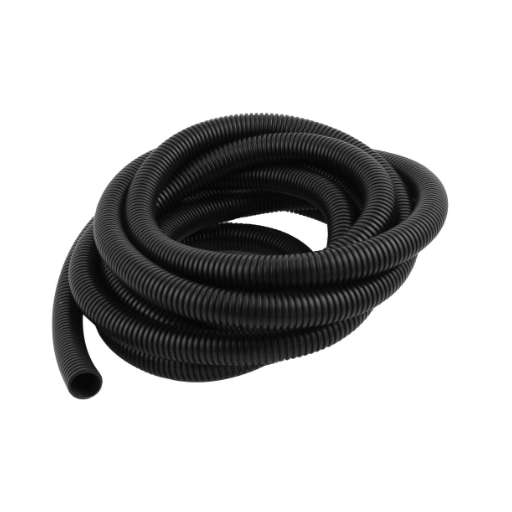
Identifying and Addressing Leaks
While uncommon, leaks in HDPE flexible pipes can still happen because of installation errors, damage from outside sources, or material wear and tear under harsh conditions. Detecting a leak as soon as possible is crucial in retaining system integrity and preventing water loss or other operational and environmental interruptions.
Most Frequent Causes of Leaking
- Failures in Joint: Weakness and failure often occur under pressure, resulting in welds or mechanical joints done during the installation processes.
- External Aspects: Cracks, punctures or damages to the pipes surface due to impact from sharp objects and hefty machines during construction.
- Environmental Stress Cracking (ESC): Localized cracking due to fractures especially aggressive balancing chemicals and stress for extensive duration.
Repair And Leak Prevention Measures
- Installation as per Approved Procedures: A certified technician must be employed along abiding to defined standards of welding and fusion pertaining to the joints.
- Maintenance and Inspection: Small cracks and defects which if not taken care of can result in greater issues need to be looked after by the aid of ultrasonic testing before hand.
- Repair Saddles: High quality restoration clamps are very efficient in dealing with small cracks and aid in restoring the pipes function till a permanent substitute can be done.
- Entire Piece Replacement: Permanently reliable in instances where the cracking is deep and wide, substituting the whole tube portion that is damaged.
Although consistent operational efficiency is top priority, selection system operators with these steps can elongate the lifespan of the HDPE flexible pipes.
Maintaining Flexibility and Resistance
To maintain the long-term flexibility and capacity of HDPE pipes, the practices of use and maintenance are of primary consideration. Careful handling and installation procedures maximize the material’s inherent resistance to ps environmental stress cracking as well as superior elongation properties. Eapicular stresses on a flexible pipe must also be alleviated by reducing end loads or sharp curves on the pipes, which may lead to damaging structural components.
Using fusion welding on joints always maintains pipeline flexibility and resistance, especially on the pipe system subject to high pressure. Ultrasonic and radiographic examinations, along with other sophisticated non-destructive evaluation methods, allow precise identification of micro-cracks and deformation, which can be reversed. Pipes can further be protected with a protective coating against outer damaging forces such as ultraviolet radiation or corrosive soil, which prolongs life.
Paradigm shifts in pipe performance monitoring have come with the advent of IoT where real time data is now available for predictive maintenance planning. These systems are capable of monitoring pressure, temperature, and strain, and offer prompt response to any issues arising from system deviations. With these approaches and innovative solutions seamless reliability and endurance of HDPE flexible pipes is achieved.
Using the Right Fittings and Couplers
The selection of fittings and couplers has a critical impact on the performance and service life of HDPE flexible pipe systems. Using low-quality or ill-fitting fittings can affect accuracy and create structural challenges alongside unneeded stress points which lead to leaks or rupturing from pressure. Advanced electrofusion and compression fittings for HDPE systems offer airtight, leakproof fittings where even harsh conditions do not affect system performance.
An example are electrofusion fittings which implore self heating coils for loosening the fabricated pipe structures so that joint making of effortless becomes achievable. It guarantees the seal is reliable and even seal is firm at high pressure and temperature shifts. On the contrary, compression couplers focus on strong yet rapid mechanical couplings for quick installs.
Compression couplings and more accessible fitting technologies offer faster turnarounds without impacting benchmarks set on urban utilities and industrial processes. Careful examination of compatibility alongside engineering needs during the selection guarantees tranquility throughout the working durations and prolonged reliability expectancy on HDPE piping systems.
References
Frequently Asked Questions (FAQs)
Q: What is an HDPE flexible pipe, and its primary use?
A: HDPE flexible pipe, often referred to as black HDPE, is a type of plastic pipe known for its flexibility and durability. It is used in various applications, including water supply, gas transfer, and municipal pipelines, due to its ability to withstand high pressure and corrosive environments.
Q: How does the coil format benefit HDPE flexible pipe installation?
A: The coil format allows HDPE flexible pipe to be transported and installed in long lengths, such as 300 ft, reducing the number of joints and potential leak points. This format is particularly beneficial for applications like ranch water and municipal systems where uninterrupted flow is crucial.
Q: What does ‘psi’ stand for in the context of HDPE flexible pipes?
A: ‘Psi’ stands for pounds per square inch, which measures the pressure that the HDPE flexible pipe can withstand. Pipes with higher psi ratings are suitable for high-pressure pipelines and demanding applications.
Q: Why is HDPE preferred over concrete or steel for pipelines?
A: HDPE is preferred over concrete or steel due to its lightweight nature, flexibility, resistance to corrosion, and lower installation costs. These attributes make it an ideal choice for high-pressure and long-distance pipelines.
Q: Can HDPE flexible pipes be used for drinking water?
A: Yes, HDPE flexible pipes are NSF approved for drinking water use. They are made from virgin thermoplastic HDPE, ensuring safety and quality for potable water applications.
Q: How does the temperature affect HDPE flexible pipes?
A: HDPE flexible pipes are designed to maintain their integrity at higher temperatures, making them suitable for a variety of environmental conditions. However, specific temperature limits should be considered based on the manufacturer’s guidelines to ensure optimal performance.
Q: Are HDPE flexible pipes suitable for electrical conduit applications?
A: Yes, HDPE flexible pipes are highly suitable for use as electrical conduits. Their durability, flexibility, and resistance to environmental factors make them a preferred choice for protecting electrical wires and cables.
Q: What are the advantages of using HDPE flexible pipes in municipal projects?
A: In municipal projects, HDPE flexible pipes offer advantages such as ease of installation, reduced maintenance costs, and longevity. Their ability to handle high-pressure conditions and corrosive substances makes them ideal for municipal water and gas pipelines.



